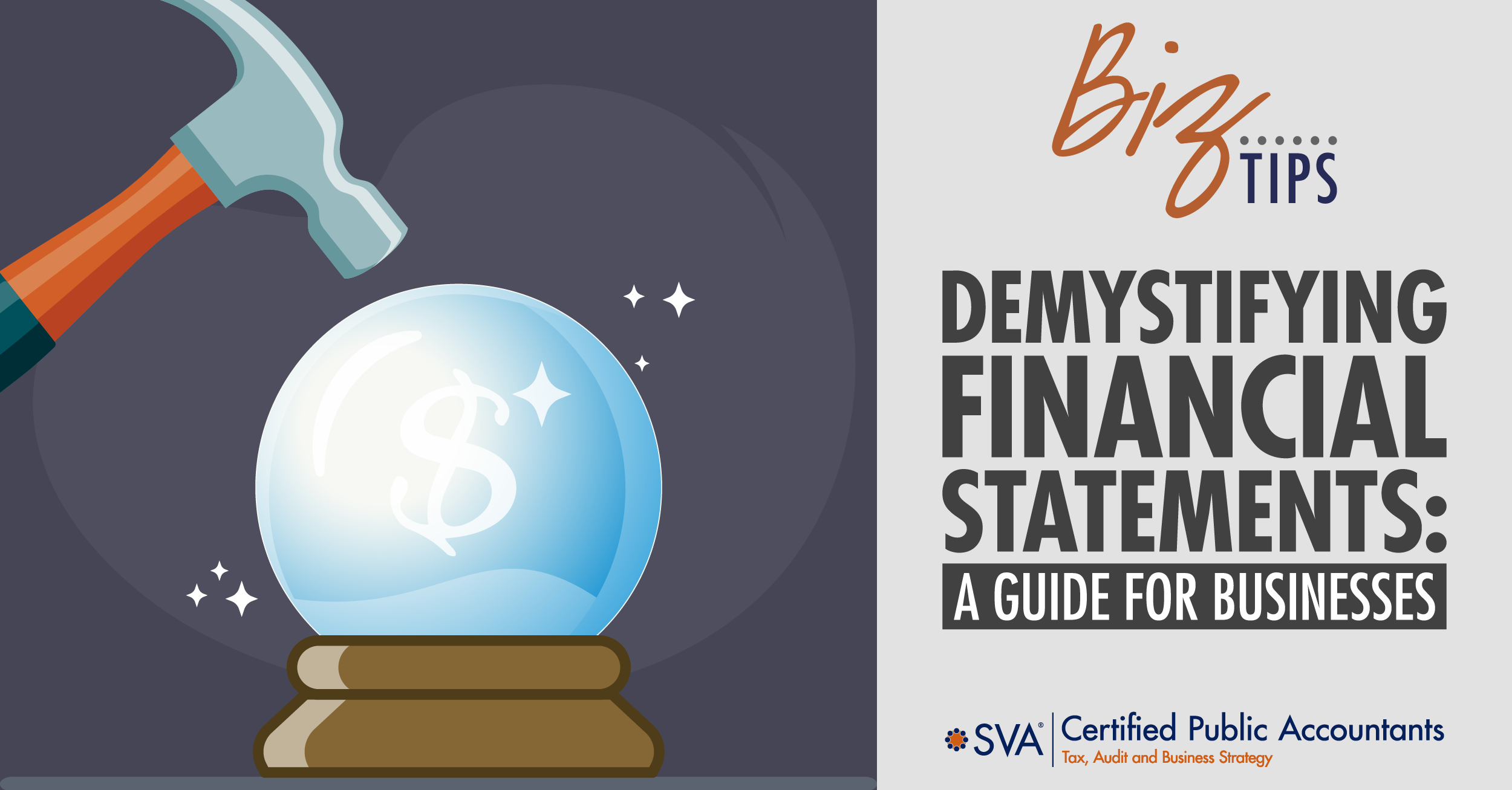| Highlights: |
- Explains the three core financial reports — balance sheet, income statement, and cash flow statement — and what each reveals about a business’s financial health.
- Offers practical guidance on reading statements, including assessing liquidity, tracking profitability, and identifying cost-saving or growth opportunities.
- Provides actionable tips for business owners to review regularly, benchmark performance, make informed decisions, and seek professional financial insights.
|
Understanding financial statements is imperative for businesses of all sizes. These documents provide a snapshot of the company's financial health and lay the groundwork for strategic decision-making.
However, for many business owners and managers, financial statements can seem daunting. They feel financial statements are just a bunch of numbers, but these numbers tell a story about their businesses.
Read on to learn what reports make up a financial statement and how to read them.
(Download Video Transcript)
Understanding Balance Sheets, Income Statements, and Cash Flow Statements
A standard financial statement typically comprises three key reports: the Balance Sheet, the Income Statement (or Profit and Loss Statement), and the Cash Flow Statement. Each serves a unique purpose in providing insights into different aspects of a company's financial status.
Balance Sheet
What it Shows:
The Balance Sheet provides a snapshot of a company’s financial position at a specific point in time. It details the company's assets, liabilities, and shareholders' equity.
Key Components:
| Assets |
These are resources owned by the company, such as cash, inventory, and property. Assets are usually listed in order of liquidity. |
| Liabilities |
These are obligations the company owes, like loans, accounts payable, and mortgages. |
| Shareholders' Equity |
This represents the owners' claims after liabilities have been paid off and is calculated as Assets minus Liabilities. |
How to Read a Balance Sheet
| Assess Liquidity |
Compare current assets to current liabilities to understand the company’s ability to cover short-term obligations. |
| Evaluate Financial Structure |
Look at the ratio of liabilities to equity to understand how the business is financed and its financial stability. |
Look for a healthy balance between assets and liabilities. A strong balance sheet typically has more assets than liabilities, indicating financial stability. Analyze the composition of assets and liabilities to understand the company’s risk and liquidity profile.
Income Statement
What it Shows:
The Income Statement provides an overview of the company’s revenues, expenses, and profits over a specific period. It tells you how much money the company made or lost.
Key Components:
| Revenue |
This is the income earned from normal business operations. |
| Operating Expenses |
The operating costs of running the business. These can be fixed or variable and include expenses such as rent, advertising, insurance, and administrative staff. |
| Cost of Goods Sold/Direct Costs |
These are costs directly incurred in producing revenue, such as materials, labor costs, or subcontracting costs. |
| Gross Profit Margin |
This is the profit after the cost of goods/direct costs are subtracted from your revenue. |
| Non-Operating Income or Expenses |
These are income or expenses not related to your primary operations and can include interest income, interest expenses, or gains or losses from the sale of assets. |
| Net Income |
This is the profit or loss after all revenues and expenses have been accounted for. |
How to Read an Income Statement
| Track Profitability |
Analyze trends in revenue and expenses to assess the company’s profitability over time. These trends can help you plan better for the future and prepare for any dips in revenue, say for a seasonal business. |
| Identify Cost Centers |
Identify areas with high expenses and evaluate if these costs can be reduced without impacting product or service quality. |
Assess the relationship between revenues and expenses to understand how efficiently the company is operating.
Cash Flow Statement
What it Shows:
The cash flow statement shows how changes in the balance sheet and income statement affect cash and cash equivalents. It breaks the analysis down to operating, investing, and financing activities.
Key Components:
| Operating Activities |
This section shows cash flow from primary business activities. Some operating activities include:
- Receipts from sales of goods and services
- Payments to suppliers for goods and services
- Payments to employees
- Interest received and paid
|
| Investing Activities |
This includes cash flow from the purchase and sale of assets, like equipment or investments. |
| Financing Activities |
This section details cash flow related to borrowing, repaying loans, or equity transactions. |
How to Read a Cash Flow Statement
| Monitor Cash Flow |
Ensure the business has enough cash to cover its obligations and identify any potential cash flow problems before they become critical. |
| Evaluate Financial Health |
Positive cash flow from operating activities is a good indicator of financial health. Reliance on financing activities to generate cash can be a red flag. Analyze cash flow from investing and financing to understand the company’s strategy for growth and capital structure. |
(Download Video Transcript)
General Tips for Using Financial Statements
Now that you understand the balance sheet, income statement, and cash flow statement, you are ready to use these tips when dealing with financial statements:
| Regular Review |
Regular (and timely) review of financial statements will enable you to catch and address potential issues. Better to catch them early than when the issues become worse. |
| Benchmarking |
Compare your financials against industry benchmarks or past performance to gauge progress and identify areas for improvement. It’s important to see where your company sits compared to the rest of the industry. These benchmarks can show weaknesses that companies can address. |
| Decision-Making |
Use insights from financial statements to make informed decisions about investments, cost-cutting, pricing strategies, and growth opportunities. Using your financial data to make decisions is better than guessing or “going with your gut.” Use the data to back up your choices. |
| Seek Professional Advice |
Consider consulting with a financial advisor or accountant to gain deeper insights and strategic advice based on your financial statements. |
Take the Mystery Out of Your Financial Statements
Financial statements provide important information that business owners can use to make smart decisions for their businesses. Reading and understanding financial statements is a fundamental skill for business decision-makers.
Remember, these statements are not just numbers, but narratives about your business's financial story.
© 2024 SVA Certified Public Accountants

